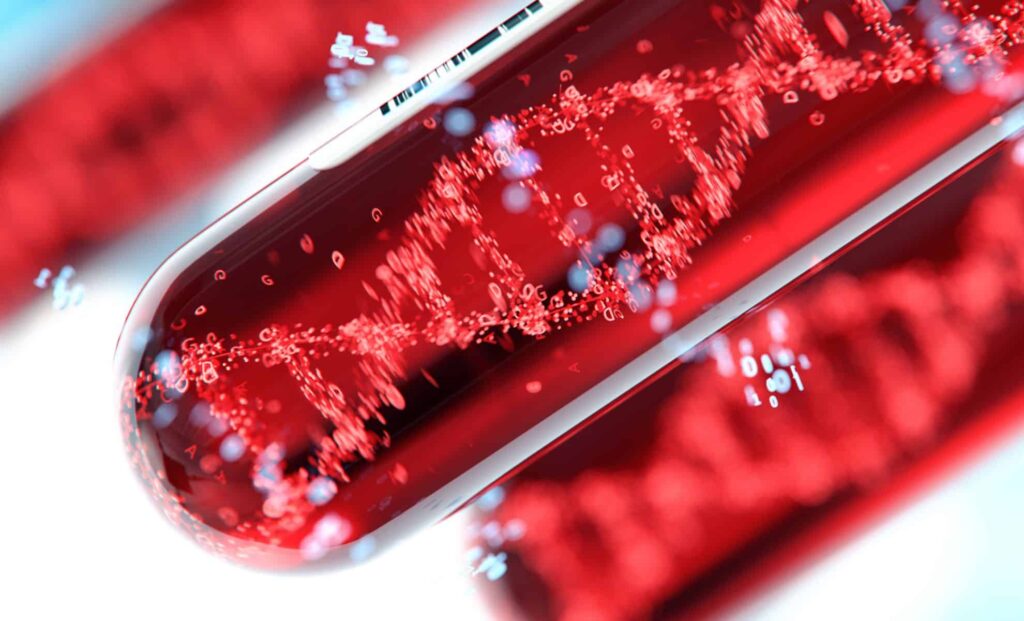The findings come from an international team led by King’s College London, which focused on hard-to-treat cases of myelodysplastic syndrome and chronic lymphocytic leukemia, two forms of blood cancer that often carry grim prognoses. The breakthrough lies in how these cancers rely on hyperactive sections of non-coding cto stay alive, a weakness researchers were able to turn against them using known compounds.
The study, published in Blood on October 27, 2025, explores what happens when mutations in key regulatory genes, ASXL1 and EZH2, disrupt the genome’s usual silence mechanisms. These mutations, common in several blood cancers, were found to wake up transposable elements (TEs), mobile DNA fragments that copy and paste themselves into new genomic locations. Instead of serving any apparent function, TEs were long thought to be genetic debris. But when they become active, they wreak havoc in cells, and that chaos could now serve as a weapon against the disease itself.
A Hidden Vulnerability in Aggressive Blood Cancers
For decades, cancer researchers have targeted the proteins produced by faulty genes. But when a gene stops producing any protein at all, it becomes what scientists call an “undruggable” mutation. This is precisely the case in blood cancers that harbor ASXL1 and EZH2 mutations. In these cells, the usual therapeutic targets vanish, leaving patients with limited options.
These same mutations, while making cancer harder to treat, have been shown to awaken transposable elements (TEs), a category of non-coding DNA that makes up nearly half of the human genome. Once activated, these rogue elements replicate, insert themselves unpredictably across the genome, and create repeated DNA breaks. That persistent damage forces cancer cells to depend heavily on DNA repair pathways to survive, creating a pressure point researchers were able to exploit.
According to King’s College London, this dependency opens up a precise vulnerability. By using PARP inhibitors, a class of drugs already approved for other cancers, scientists were able to prevent the repair process in cancer cells overwhelmed by TE activity. The result: cell collapse, without significant damage to healthy cells.
Testing in Mice and Human Samples Shows Consistent Effects
The research team conducted in-depth testing using both genetically modified mouse models and human cancer cells. Mice engineered to carry both ASXL1 and EZH2 deletions developed aggressive blood cancers that mimicked human disease, including advanced forms of chronic lymphocytic leukemia and myelodysplastic syndrome. These double knockouts showed extensive TE activation, DNA damage, and organ infiltration, especially in the spleen and liver.
When treated with PARP inhibitors such as olaparib and veliparib, the mice exhibited prolonged survival and reduced tumor burden. Importantly, these drugs had little effect on healthy blood cells or on leukemias that lacked TE activation.

In human samples from patients with ASXL1– or EZH2-mutated blood cancers, the response mirrored what was seen in the mice. Cancer cells showed an increase in TE-driven DNA damage and responded to PARP inhibitor therapy with elevated levels of cell death. According to the researchers, the treatment’s effectiveness could be reversed by using reverse transcriptase inhibitors, which shut down the replication mechanism of TEs, essentially proving that the TE activity was central to the treatment’s success.
A New Twist on Synthetic Lethality in Oncology
The concept at the heart of this discovery is synthetic lethality, a strategy where two combined defects, neither fatal on their own, trigger cell death. Traditionally, this approach has been used in tumors with BRCA mutations, where DNA repair defects make cancer cells sensitive to PARP inhibition.
Here, however, the mechanism is entirely different. The cells are not deficient in DNA repair by nature; they’re overwhelmed by excessive DNA damage caused by hyperactive TEs. According to the study authors, “This mechanism is contrastingly different from the current concept of BRCAness.” In other words, it’s not that the cancer cells can’t repair DNA—they just can’t keep up.


By blocking PARP in cells already flooded with TE-induced breaks, scientists managed to tip the balance. The repair systems collapse, and the cancer cells die under their own genomic weight. Intriguingly, when reverse transcriptase inhibitors like didanosine or lamivudine were introduced alongside the PARP drugs, the cancer-killing effect vanished, further confirming the link between TE activity and drug sensitivity.
This multi-pronged strategy could change how drug-resistant blood cancers are approached, especially for patients who currently have no effective treatment options. According to data from Blood, the reactivation of TEs is not only a byproduct of mutation but a functional lever that can be pulled to kill cancer from within.

